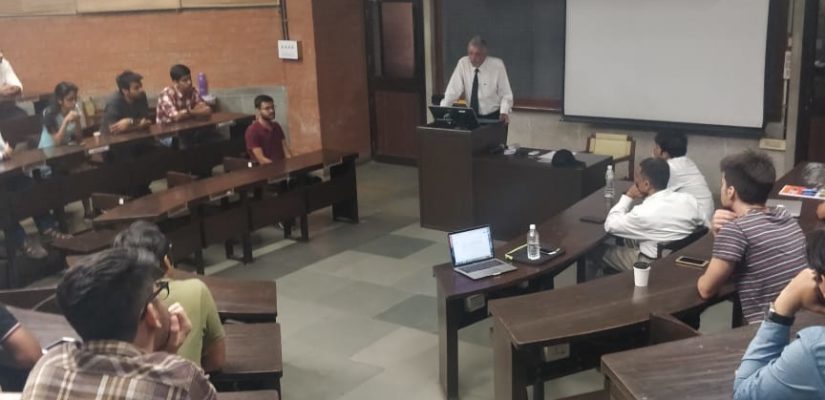
Has Pakistan started losing the hybrid war in Kashmir? ORF 05 Dec 18
https://www.orfonline.org/expert-speak/has-pakistan-started-losing-hybrid-war-kashmir-46027/
Has Pakistan started losing the hybrid war in Kashmir? ORF 05 Dec 18
The army chief during his talk at the YB Chavan memorial lecture on ‘Addressing the Challenges of Hybrid Conflict in the 21st century’ stated that India should first resolve problems in J and K through an integrated approach to tackle the ‘hybrid warfare’ unleashed by Pak instead of harbouring immediate notions of regaining POK. He was referring to hybrid warfare launched by Pakistan in J and K. He also stated that it should not lose sight of its goal of regaining POK.
Hybrid warfare is an all-encompassing term which goes beyond destroying an enemy’s military capabilities. It covers a full spectrum combining conventional and irregular warfare alongside cyber and information warfare. It also includes fermenting internal disorder in the target country. Thus, while the term may be all-encompassing, it remains below the threshold of an all-out war and continues during peace and war.
‘Hybrid warfare’ unleashed by Pak in Kashmir includes use of irregulars in the 1947-48 and 1965 wars, Kargil adventure, instigation of stone throwers to disrupt security forces operations, bandhs leading to closure of schools, burning of schools and pushing in terrorists to target security forces and locals who do not support their view. Economic warfare including pushing in counterfeit currency and employing hawala transactions to fund internal unrest is part and parcel of hybrid warfare. It also includes using propaganda to turn the population against the state employing social media.
It was Pak based terrorists responsible for the massacre and migration of Kashmiri Pundits from the state, changing the demography of the region forever, which has benefitted them in extending the conflict. In the case of Pakistan, the world is aware that in every terrorist action, somewhere the hand of Pak emerges. Pak run terrorist factories export their products to every part of the globe.
Over the years, Pak infiltrated terrorists were maintained at a level keeping threshold of Indian tolerance in mind. The attacks on Parliament and Mumbai tested Indian patience. Post the surgical strike, which Pak continues to deny, Pak realized that India can and would hit back. Strong response by India to Pak attempts at infiltrating terrorists, improving its anti-infiltration grid and enhancing its counter-terrorist operations based on firm intelligence has begun changing the scenario in the valley.
Post the elimination of Burhan Wani, the spurt of locals joining militancy was the success of hybrid warfare launched by Pak. It was sustained for a period. Presently inputs indicate that the trend is waning.
With the onset of winter, attempts at infiltration will reduce in the valley, while they may increase in the plains. Relentless operations against terrorists based on flow of intelligence from locals who no longer desire to be associated with terrorism has enhanced their rate of elimination. In the month of Nov alone 39 terrorists, of which 9 are militant commanders, have been eliminated taking the total to over 225 this year. Only 3 militant leaders remain. The back of most terrorist organizations has been broken.
Inputs from the valley also indicate lesser numbers are picking up the gun, compelling terrorist groups seeking to expand their recruitment to scout educational institutes located away from the valley. Violence in support of trapped terrorists has also shown a stark reduction. Violence is now localised and of lesser intensity than earlier. It follows successful encounters but fades soon after. Calls for bandhs from separatists has dropped because there are hardly any takers as locals have realized the futility of such an exercise.
The brutal killing of locals and off-duty policemen by terrorists claiming them to be informers or anti-state has only alienated them further and reduced their support base. Daily inputs flow of terrorist presence, including local terrorists, who were earlier hidden from security forces. So accurate is the flow, that operations are clean without any collateral damage. This is indicative of a changed approach across the valley.
Simultaneous has been enhanced international pressure on Pak to act against terrorists on its soil. The US has been the most relentless in pushing Pak to act. Pak has slowly begun facing international isolation. A US spokesperson confirmed that apart from nominating Pak as a sponsor of international terrorism every other form of pressure is being applied on the state.
The recent political action by the J and K governor of dissolving the assembly rather than permit a government which only seeks political power without a common ideology has won the support of masses and local political leadership. Alongside this has been the increased turnout in recently held local elections.
Winters have just commenced and as temperature drops, it would compel terrorists presently hiding away from populated regions to move inwards. Encounters would only increase and more would be eliminated. Pak’s desperation to expand terrorism to Punjab, as was evident in the recent blast in Amritsar, indicates that they are beginning to realize that Kashmir is now a losing battle or at best a stalemate.
While the army has been able to bring down the levels of violence and has effectively reduced the number of terrorists present in the state, it is time for the government to act. It must engage with the youth and enhance employment avenues, thus taking them away from the streets and radicalization. Engaging the youth would withdraw the only support which terrorists bank on in the valley, isolating them even more. This action would assist security forces in turning the tide of hybrid warfare.
Though these are early days, but indicators are evident of the state gaining the upper hand. It is this moment which must be exploited to turn tables, failing which it would be one more missed opportunity.